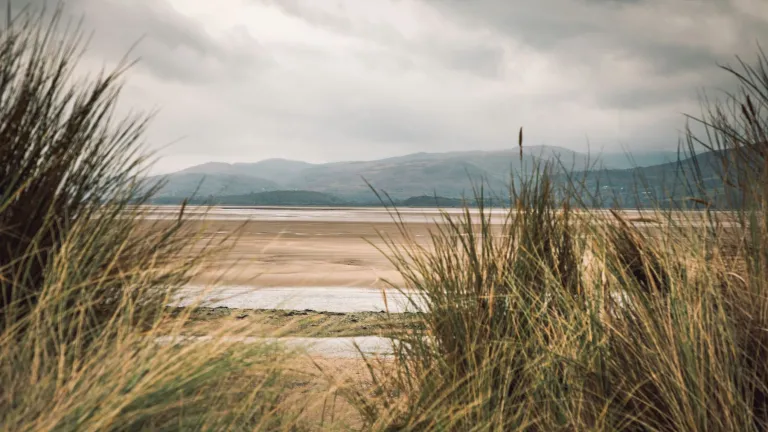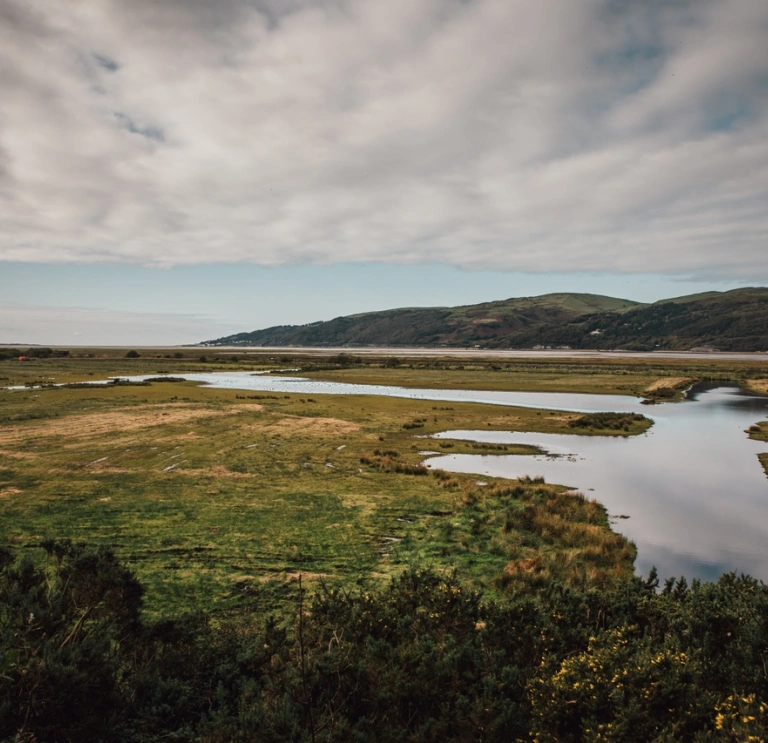The Dyfi Biosphere
A remarkable place, the Dyfi Biosphere is home to perhaps the richest variety of rare creatures and plants in the country.
Maybe you're wondering what a biosphere is and what makes it so special? As you might imagine, it's an area of unique habitat, home to rare species. But biospheres are about community too. There's an inherent appreciation that people as well as wildlife need to live on the land. Working out how to live harmoniously with the natural environment - to strengthen and improve it - is key. Biospheres are learning places for sustainable development as well as havens for wildlife.
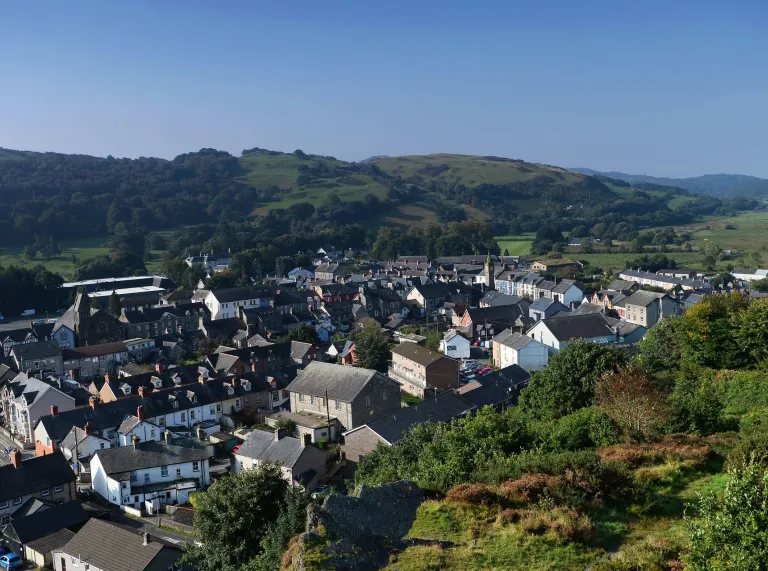

Designated by UNESCO, biosphere reserves are also relatively rare. The UNESCO Biosphere Reserve (Dyfi) is the only one in Wales and there are just seven in the United Kingdom. It covers a large swathe of Mid Wales, extending 35miles (75km) inland from the coast between Aberdyfi and Aberystwyth, including part of Eryri (Snowdonia) National Park and around 10miles (16km) out to sea as well.
It also encompasses the communities in Aberystwyth, Borth, Talybont, Aberdyfi, Corris, Machynlleth, Llanbrynmair and Dinas Mawddwy.
Get closer to the biosphere's wildlife
For visitors to the Dyfi Biosphere, one of the biggest attractions is the exceptional wildlife. Nature reserves inside it include Ynys-hir RSPB Reserve which hosted the BBC's Springwatch and Autumnwatch, the Dyfi Wildlife Centre on the Cors Dyfi Reserve, Glaslyn Nature Reserve with its heather moorland, the Ynyslas dunes of the Dyfi National Nature Reserve and the unique raised peat bog of Cors Fochno.
So, here are some of our favourite seasonal wildlife encounters. No matter what time of year you visit, there's plenty to see.
Dyfi Biosphere in Winter
During the winter months, on the beach you may well see waders, sanderlings and golden plovers. A little way inland, the Dyfi estuary saltmarshes are home to wintering waders and wildfowl.
At Ynys-hir RSPB Reserve look out for huge flocks of ducks like teal, wigeon and golden eye plus the only regular wintering population of Greenland white-fronted geese in Wales and England. The estuary hides are ideal spots to see them. With luck you may be able to spot otters hunting for food in the pools and river too.
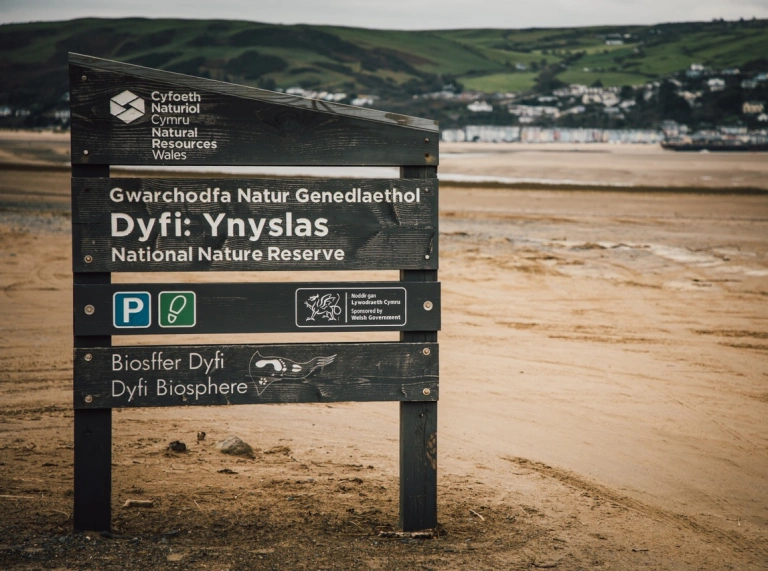
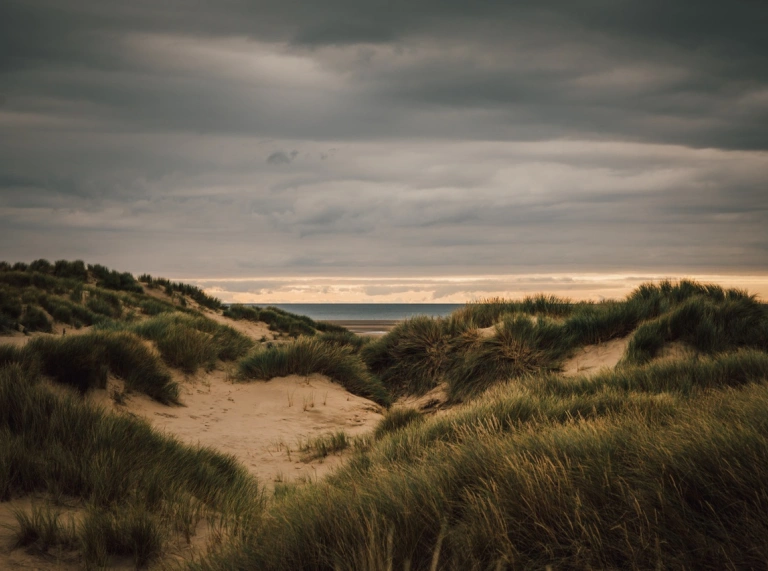
Look out too for hunting birds of prey including red kites, hen harriers, short eared owls, buzzard merlins and peregrine falcons. You'll often see them chasing flocks of finches. A good place to spot them is Cors Fochno peat bog.
At Cors Dyfi Reserve the feeders throng with larger numbers of smaller birds and elsewhere you may well see barnacle geese and hen harriers. If you're lucky you might even see the shy Bittern in the reed beds.
Dyfi Biosphere in Spring
With the cold days of winter over, cotton grass springs into life at Cors Fochno peat bog. You may see common and sand lizards, adders and grass snakes on Ynyslas dunes, and linnets, stonechats, skylarks, and grasshopper warblers fluttering above.
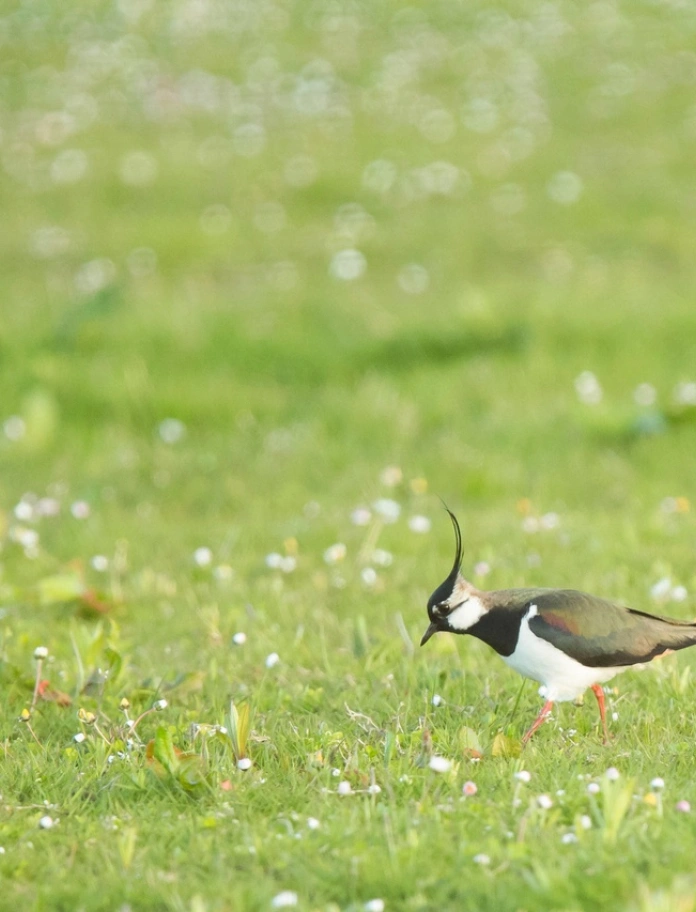
Woodlands like Penglais and Abercorris sport carpets of bluebells in spring. Look out for pied and spotted flycatchers, great spotted woodpeckers, treecreepers and the common chiffchaff. Woodland breeding birds also include blue, coal, great and long tailed tits, pied flycatchers, redstarts and wood warblers along with birds of prey like peregrine falcons, red kites, hen harriers and barn owls.
Ospreys arrive at Dyfi Wildlife Centre to breed in early April staying through the summer to raise their young. And in late spring and early summer, breeding birds such as coots, moorhens, mallards and reed buntings set up home on and around ponds and reedbeds at places like Severn Farm Pond Nature Reserve.
Dyfi Biosphere in Summer
The warmer days of summer encourage marsh and bee orchids to bloom on Ynyslas dunes, soon followed by pyramidal orchids. Bright flowers spring to life on the saltmarsh: sea spurrey, sea pink, sea aster and unusual green fleshy marsh samphire. Grass snakes and common lizards dart away as you walk.
You should see flitting butterflies, moths and dragonflies on many of the reserves with the rosy marsh moth and large heath butterfly at Cors Fochno of particular interest. Damselflies and dragonflies are easy to spot on the wetlands along with lots of toads!
On the Ynys-hir RSPB Reserve migrant waders like green sandpipers and greenshanks arrive whilst birds of prey here include majestic peregrine falcons and red kites. You might even spot ospreys and otters on the estuary.
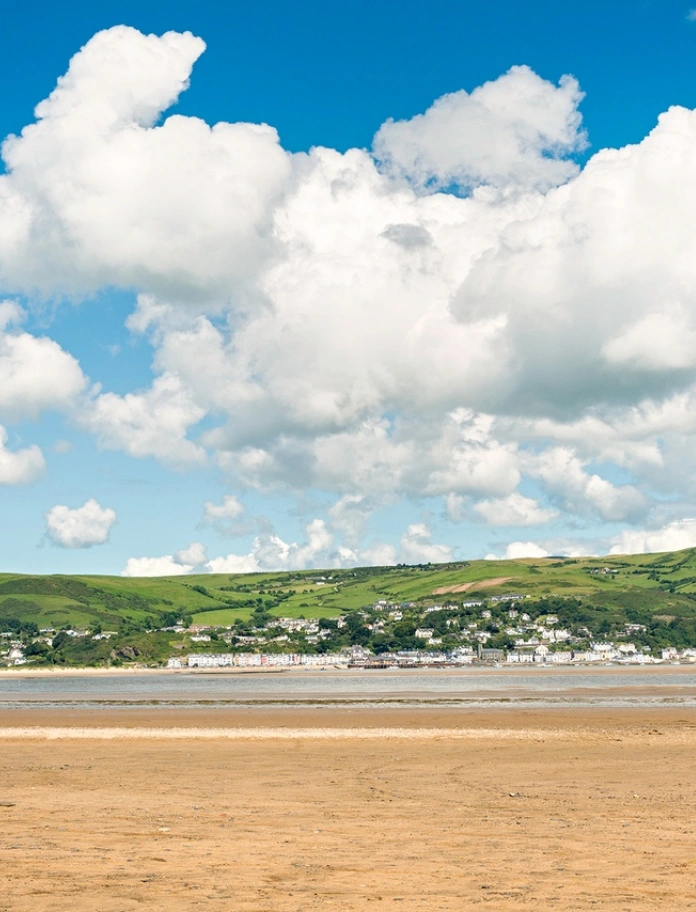
Dyfi Biosphere in Autumn
In autumn, the trees put on a show of yellow, orange and red; also look out for the seasonal colour changes at Cors Fochno. You can go on a funghi spotting stroll around the Dyfi National Nature Reserve. See if you can spot unusual earth stars and bird's nest varieties as well as waxcaps and puffballs.
There's also plenty of wildlife activity during autumn, with badgers and hedgehogs stocking up on food before the winter. Pine martens have been reintroduced to the Cwm Rheidol valley near Devil's Bridge.

In the shady woodlands like Abercorris and Cwm Clettwr you'll see dragonflies and butterflies, and if you're lucky otters and kingfishers in ponds and rivers. There are dormice here too, though they're very hard to spot. The shorter nights of summer are ideal for watching nocturnal animals like badgers.
You may also see water buffalo grazing on the Cors Dyfi Nature Reserve. And beavers have been reintroduced here - the first in Wales. If you don't see them, you may well see signs of their dam building activity.
If you're on the coast, look out to sea! It's relatively common to spot pods of dolphins and porpoises close to shore.
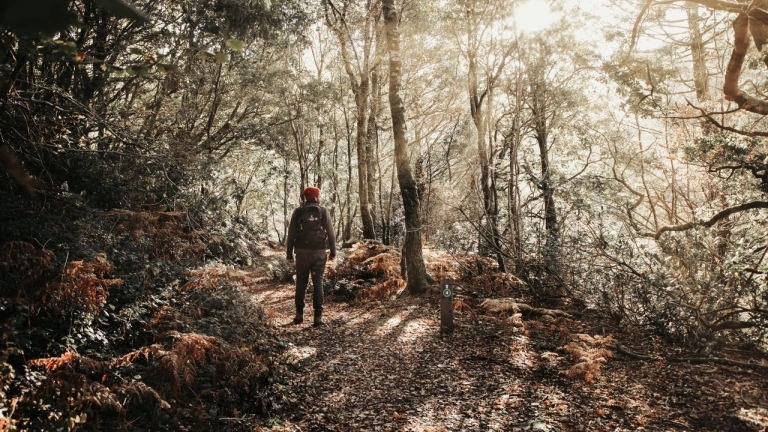
Large numbers of waterfowl feed on the saltmarshes at Ynys-hir, including wigeons, teals, shovelers, white-fronted geese and barnacle geese. Many birds of prey are still active in Autumn. Wading birds such as lapwings, golden plovers and curlews returning to the estuary. And keep an eye out for salmon and bass migrating up the Dyfi river to spawn upstream.
If you're out at dusk, you may well see starlings on the Aberystwyth seafront. Hundreds, sometimes thousands, form swirling murmurations before coming down to roost for the night.
How to see the Dyfi Biosphere
There are plenty of ways to spot the wildlife in the Dyfi biosphere.
Go for a walk
Without question the best way to see the wildlife is on foot. There are designated walking trails around the reserves and many are also suitable for buggies and wheelchairs. At RSPB Ynys-hir three separate trails take in the woodland and wetlands and there are hides and screens for viewing the birdlife. At Dyfi National Nature Reserve there are marked trails through Ynyslas dunes and a boardwalk on the Cors Fochno peat bog.
The long distance Dyfi Valley Way runs all the way up the Dyfi Valley to the spectacular peak of Aran Fawddwy in Eryri (Snowdonia) and back. And the Wales Coast Path covers the length of the biosphere coastline then cuts inland around the estuary, offering a wide range of walking from long flat sections along the edge of Cors Fochno to more intense climbs with azure sea views between Clarach and Borth.
The Dyfi Biosphere website has links to leaflets and audio guides detailing easy walks through unique sites of interest - such as the Bronze Age stone circles,
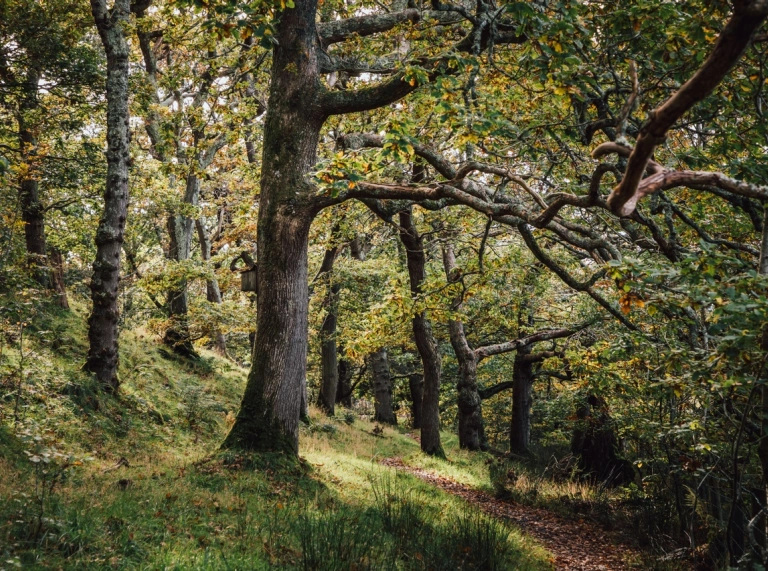
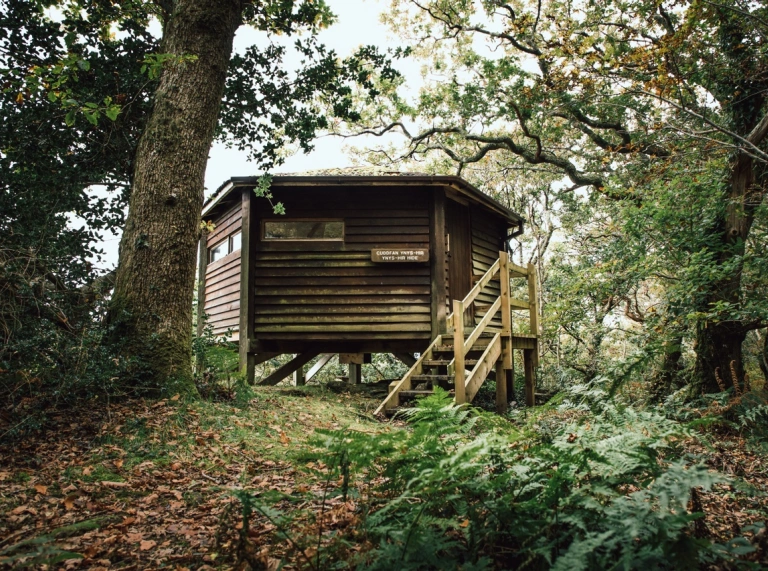
Take to the water
Stand up paddleboards are a great way to explore the estuary, which is particularly tranquil at low tide - ideal for seeing birdlife up close. Several local companies offer guided trips. The beaches at Aberystwyth and Borth are long stretches of sand, ideal for a swim or surf. Look out for seabirds and if you're lucky dolphins and seals further off-shore. Aberdyfi beach is also wide and sandy, but it's only recommended for sailing and kayaking as the currents here around the estuary mouth are too strong for safe swimming.
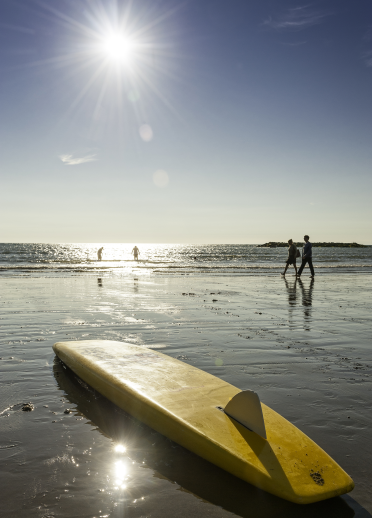
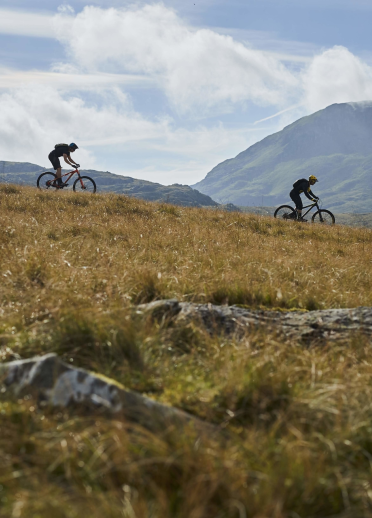
Jump on a bike
You probably won't see that much wildlife if you're going at speed, but the biosphere is home to world class mountain biking trails. Mach 1 is an ideal starter - 21km of relatively easy biking with a nice mix of open moorland and forest descents. More confident riders will enjoy Cli-Machx which features one of the longest descents in Wales.
